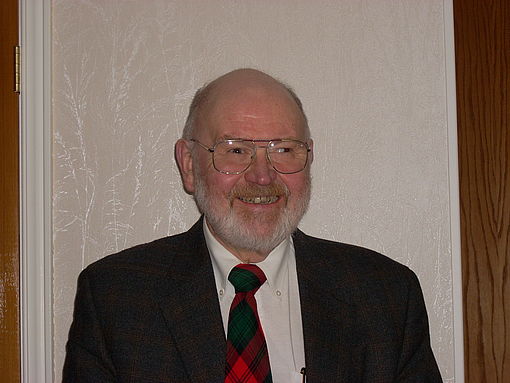2019 Donald O. Hebb Distinguished Contribution Award Winner: Dr. Douglas Mewhort
Doug Mewhort (Ph.D., 1968, Waterloo) was Professor Emeritus of Psychology at Queen’s University in Kingston and a world authority on human memory and computational modeling. He published over a hundred scientific articles, edited two books on computational methods, and garnered over $59 million to support his research and related initiatives.
In the 1970s, Doug examined visual cognition, iconic memory, and mental organization. This body of experimental work culminated in his scanning model of iconic memory – a theory that exerted a strong influence on how people came to think about memory and visual processing.
In the 1980s, Doug shifted his attention to an analysis of memory at large. It was in this period that he began to think about and examine computational theories, including an analysis of the word superiority effect and the interactive activation model by Rumelhart and McClelland. He also spent a sabbatical with the “Perception and Action” group at the Centre for Interdisciplinary Research in Bielefeld, Germany in 1984-85. By the end of the decade, that work was capped off by the paper “Alice in Wonderland, or Psychology Among the Information Sciences” – a classic in the field that had a weighty influence on the emerging discipline of Informatics in Psychology and that doubled as a tribute to Donald O. Hebb – his intellectual grandfather – who published a likeminded paper in 1958 entitled “Alice in Wonderland, or Psychology among the Biological Sciences”.
In the 1990s and 2000s, Doug shifted his interest again to examine knowledge representation and large-scale computation. He pursued this line of work by, first, helping to establish the availability of large-scale high-performance computing resources for Canadian academics and, then, using those resources to build and develop a large-scale computational theory for psychology. As usual, his work was on the cutting edge as he developed the BEAGLE theory of semantic memory and he applied related logic and methods to advance the field’s understanding of spelling-to-sound conversion, recall, implicit learning, learning, and statistical methods.
Very recently, Doug concentrated his efforts on two problems. The first was a critical re-appraisal of signal detection theory as a valid model for human memory – an analysis spurred by his discovery of the “extra-list feature effect” in recognition memory with his collaborator and wife, Elizabeth Johns. The second was his development of a general theory for memory that incorporates semantic representation to reproduce hallmarks of cognitive control including order of report, clustering, and subjective organization in recall and recognition.
Based on his body of work, Doug is recognized as one of, if not the, most dominant Canadian computational psychologist. His ideas are woven into the fabric of the field’s formal theories and his empirical work has forced incisive and rigorous constraints onto the field. Doug’s contributions represent an unusually coherent and unified picture of scientific and theoretical rigour.
In addition to his scientific work, Doug has mentored a number of scientists who have gone on to establish their own laboratories and served the academic community with exemplary verve and dedication including but not limited to a term as CSBBCS President, Editor of the Canadian Journal of Experimental Psychology, Director Representing Science on the Canadian Psychological Association’s Governing Board, Associate Editor for Psychological Research/Psychologische Forschung, and Consulting Editor for the Journal of Experimental Psychology: Human Perception and Performance.
Doug’s health had declined for the past several years, although he did not let that get in the way of his research. Sadly, shortly after receiving the news of his Hebb Award, Doug passed away on February 28. Before passing, he noted that the CSBBCS Donald O. Hebb Award was the greatest honour he had received over his notable career.


